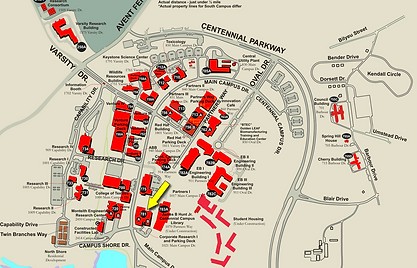
Ethnography on the Biomedical Engineering Field
at North Carolina State University
According to North Carolina State University’s website, biomedical engineers “Define and solve problems in basic medical sciences and human health by integrating engineering and biology using engineering analysis, experimentation, mathematical and scientific principles.” (Undergraduate Biomedical Engineering, n.d.). In general, biomedical engineering is applying the principles of engineering to biology and health care. However, biomedical engineering is an incredibly broad subject, as seen in Shim’s book “Solving problems in human health, well-being, and disease increasingly requires convergence of scientific and engineering fields with medicine” (2016, p. 5).
Before going too in depth on biomedical engineering specifically, let’s focus on engineering as a whole. Engineering is a relatively small field when it comes to the country as a whole, with only 11% of freshmen in engineering, and less than three percent plan on going into computer science (Anderson-Rowland, 2014, Section 1). Furthermore, forty percent of students in these degrees either change degrees or fail to obtain their degrees (Anderson-Rowland, 2014, Section 1). However, at NC State University, engineering is our largest college, with 9,600 undergraduate students, eighteen bachelor’s degrees, twenty-one master’s degrees, and thirteen doctoral degree programs. In addition to that, we have state of the art laboratories and research centers, as well as an additional campus to hold most of our engineering programs.
Biomedical engineering, while a broad discipline, focuses on the betterment of health and health care. Even more specific, according to Brinnae, the biomedical engineering department offers three specific disciplines, which are biomedical instrumentation, biomaterials, and biomechanics. Biomedical instrumentation is defined on the NC State website as “combining electrical engineering with medicine” and includes several examples, such as pacemakers, defibrillators, implants, and imaging machines. Biomaterials is the use of materials within the body to replace or replicate tissue and organs. This includes tissue engineering and materials used in prosthesis or implants. Biomechanics is defined as the study of the movement and structure of the body and living organisms to develop methods for imitating or recreating these organic movements.
Biomedical engineering, like all engineering disciplines, strives to achieve and create solutions to problems known as the Grand Challenges of Engineering. The ones that focus specifically upon biomedical engineering are reverse-engineering the brain, advancing health informatics, and engineering better medicines. Reverse-engineering the brain focuses on figuring out how the brain works in order to be applied to better knowledge of ourselves, diseases, and will help advance artificial intelligence. Advancing health informatics is “a systematic approach to health informatics — the acquisition, management, and use of information in health” to greatly enhance the quality and efficiency of medical care and response to widespread public health emergencies (Advance Health Informatics, n.d.). Engineering better medicines focuses on using genetic science to create personalized medicine, and combating drug-resistant infectious agents. While there are many aspects to biomedical engineering and several specific disciplines, they focus largely on these three particular challenges.


Map of Centennial Campus

Computer generated image of a person where you can see their brain